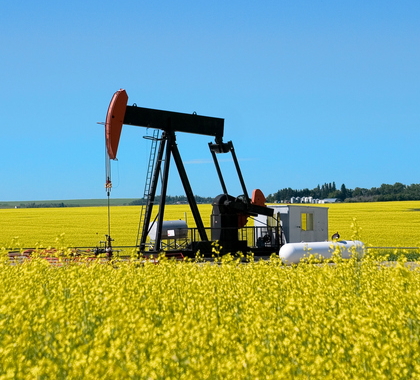A study from researchers at Miami University in Ohio—recently published in the peer-reviewed journal Energy Economics—provides new evidence that the hydraulic fracturing (commonly known as “fracking”) revolution over the last 18 years has had a significant impact on the reduction of greenhouse gas emissions in the United States.
The researchers found that between 2007 and 2019 the fracking-induced shale boom was responsible for an average annual per capita reduction in carbon dioxide (CO2) emissions in the United States of 10.5 percent, as well as a 7.5 percent reduction in annual total greenhouse gas (GHG) emissions.
“We find that the shale gas boom has played a pivotal role in reshaping the U.S. energy landscape, resulting in a greener economy,” the researchers conclude.
The voluntary GHG emission reduction efforts by the oil and gas industries are continually ongoing and are increasingly effective. These efforts are a significant reason why the GHG emission intensity of the country’s energy profile has decreased by 32 percent between 2017 and 2020, according to the U.S. Department of Energy’s National Energy Technology Laboratory.
Elsewhere on that front, the 2024 annual progress report of the Oil and Gas Climate Initiative (OGCI)—a coalition of 12 of the world’s largest oil and gas companies including Aramco, British Petroleum, Chevron, CNPC, Eni, Equinor, ExxonMobil, Occidental, Petrobras, Repsol, Shell, and TotalEnergies—shows its members have cut their upstream methane emissions by 55 percent and reduced upstream GHG emissions from flaring by 47 percent.
“Flaring” in oil and gas development refers to the controlled burning of natural gas that cannot be processed or sold. This occurs at oil production sites where gas is extracted along with oil but is not economically viable to capture and transport to market. Flaring produces carbon dioxide and smaller amounts of pollutants like methane and nitrogen oxides.
“Flaring intensity” refers to the amount of gas being flared in relation to the volume of oil being produced or to the overall level of production activity. It is a metric used to assess how much gas is being wasted through flaring and to gauge the efficiency and environmental impact of the flaring practices at a given site.
OGCI members also lowered their upstream carbon dioxide intensity by 21 percent since 2017, with an analogous total GHG emissions decrease of 19 percent. OGCI members were responsible for 26 percent of global oil and gas output in 2023.
Meanwhile, the 2024 Climate Report of the Interstate Natural Gas Association of America (INGAA), a 27-member trade organization representing the vast majority of the interstate natural gas transmission pipeline companies in the United States and Canada, shows a 14 percent decrease methane emissions intensity from their members between 2021 and 2022, with a 6 percent decrease in overall methane emissions.
These two industry studies mirror the findings of the U.S. Environmental Protection Agency’s recently released 2023 data from its Greenhouse Gas Reporting Program (GHGRP), which show a 44 percent drop in methane emissions overall from 2011.
EPA found similar conclusions in a report released in conjunction with the Clean Air Task Force in June, showing a 37 percent overall decline in methane emissions from 2015 to 2022. Meanwhile, the 2024 annual report of The Environmental Partnership, a voluntary collective of oil and gas companies “committed to continuously improving the industry’s environmental performance,” found that its members—who are responsible for nearly 70 percent of U.S. onshore oil and natural gas production—have decreased their flare volumes by 76 percent since 2019.
The oil and natural gas deposits found throughout the United States are abundant, affordable, and environmentally safe. Moreover, they can ensure the United States is the world’s largest energy producer well beyond the 21st century. Therefore, policymakers should refrain from placing unnecessary burdens on the natural gas and oil industries which positively impact state economies and are committed to safe, environmentally responsible extraction, as these reports clearly demonstrate.
Heartland Impact can send an expert to your state to testify or brief your caucus; host an event in your state; or send you further information on a topic. Please don’t hesitate to contact us if we can be of assistance! If you have any questions or comments, contact Cameron Sholty, at csholty@heartlandimpact.org or 312/377-4000.


